Published on June 9, 2013
By Thomas C. Van Hare
Juan de la Cierva was the son of a wealthy Spaniard who, by age 17 in 1912, was already designing aircraft in Spain. He continued on in school and earned a degree in civil engineering, though his first love remained airplanes. By 1919, he had given up on fixed wing aircraft designs because of their tendency to stall, often with disastrous results. If the stall problem could be solved, he reasoned, many lives would be saved. Thus, he began experimenting with a radical concept that involved the principles of autorotation, whereby a spinning rotor would allow the aircraft to descend to the ground without any risk of stalling. If there was just a way to fly based on autorotation, he reasoned, the problem would be solved.
On June 9, 1922 — today in aviation history — after four years of experimentation and numerous challenges that he overcame through many crashes and struggles with the problems of stability, control and roll, his first autorotation-based aircraft made its first successful flight. De la Cierva had invented what he called the “Autogiro”, which is more commonly known as the Autogyro in English.
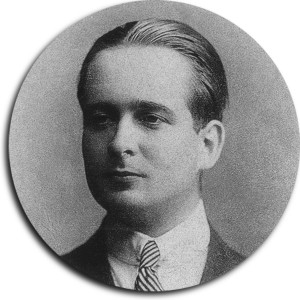
Autorotation and the Autogiro
The term autorotation had come into use sometime after 1915 when early experiments were undertaken by those attempting to pioneer the first helicopter models. In general — and to avoid the more technical jargon — the term autorotation can be defined as flight that depends on lift produced by an non-powered rotor on the aircraft. To put it more simply, when a rotor is powered, the air is taken from above and forced downward through the rotor disk and it is this that produces sufficient lift to fly. When in autorotation, the exact opposite happens — the air comes from below and, by passing through the rotation of the rotor blades, produces lift. With autorotation, the air must come from below the rotor itself and for early theorists, this meant that the only direction of travel was downward if in autorotation. Thus, the only reasonable use of autorotation seemed to be that the speed of the descent could be slowed.
Juan de la Cierva’s great leap of invention was that the rotor plane could be angled so that the front edge of the disk was “higher” than the rear edge to the angle of the relative wind. To keep flying, he realized that an engine could be mounted on the nose and, so long as the aircraft was pulled horizontally through the air fast enough, the rotor would continue to spin and the autorotation would produce sufficient lift for it to fly, rather than just descend. His aerodynamic tests with small models proved the case. With enthusiasm, he began to develop his first aircraft, the Cierva C.1. This was his first experimental design and was built in 1920 based on a Deperdussin fuselage with twin, counter-rotating rotors mounted above the cockpit.
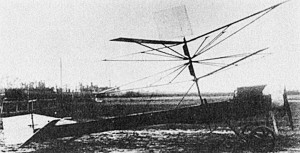
Challenges to be Overcome
What looked great on the drawing board and in small models, however, failed miserably once built at full size. The failures with his Cierva C.1 design were not useless, however, as they uncovered serious challenges and gave hints as to the direction of the next experiments. First and foremost was the problem that the twin rotors created aerodynamic turbulence due to their interaction and to their different rates of rotation. The Cierva C.1 could never achieve take off, but it did prove the core principle of autorotation based on forward movement with a tilted rotor. After the C.1, De la Cierva decided to abandon paired rotors in favor of a single rotor.
The Cierva C.2 was thus an entirely new design. As he did not wish to manufacture a full aircraft, De la Cierva always preferred to utilize existing aircraft fuselages. For the C.2, he borrowed from a Hanriot biplane. A five-bladed, single rotor was mounted atop the airframe. Due to a shortage of funding, however, the C.2 took two years to complete — and meanwhile, he had also built and tested his C.3. The Cierva C.2 was a disaster, however, and crashed repeatedly. In the end, after nine rebuilds and multiple crashes in between, the C.2 was finally scrapped. The Cierva C.3, with a Sommer biplane fuselage, fared little better. It managed a series of short “hops” but each time, no matter what De la Cierva did, the aircraft tended to roll to the side.
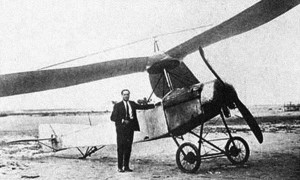
He had discovered the key problem with a single rotor in autorotation-based forward flight — and that was dissymmetry of lift. Simply defined, the advancing blade (relative to the direction of flight) had greater relative airspeed than the retreating blade on the opposite side — due to the forward motion of the aircraft. Thus, the lift produced was asymmetric, causing the rolling moment. Working through the math, De la Cierva saw few solutions to the problem — at any speed. His best reasoning was that the airfoil or angle of attack would need to be adjusted twice on each rotation — when coming forward, a lower angle of attack (flatter blade) would be needed, while the retreating blade would need a higher angle of attack (sharper pitch) to produce higher lift. The problem he faced there was that at each speed and different loading, the angle of attack would have to be adjusted variably or the roll moment would be reintroduced. This proved to be a major quandary.
Solving the Key Problem
In 1922, Juan de la Cierva managed to produce a design that addressed the problem of dissymmetry of lift. This was the Cierva C.4, which again used a Sommer monoplane fuselage. His key discovery was derived from tests with models that he had built of the earlier aircraft. In each case, he noted that the problems encountered in the full scale aircraft were not present in his first testing models. After examining aerodynamic principles, he could find no reason for the results he was seeing.
He returned to his civil engineering training and considered mechanical reasons for the differences. This lead him to realize that the models, which used bamboo rotor blades, had greater blade flexibility than the full scale aircraft. Yet how could flexibility play an aerodynamic role and, if it was so, what was it that was happening? As the spinning rotor was too fast for direct observation, he was left with solving the problem by his intelligence alone. He was stumped. Hour after hour of thinking through the problem lead nowhere.
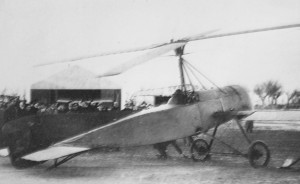
Inspiration at the Opera
Finally, he gave up and attended the opera. While listening to the soaring voices, he suddenly hit on the answer. The flexibility of the blades reduced the forces acting on the hub in varying degree at each speed and loading for the advancing and retreating blades. The result was that the roll forces were eliminated. The larger blades of the full size aircraft, however, could not be made suitably flexible — but that was a problem he would have to solve in the next few weeks. He had experienced the key, “eureka!” moment in the design of the Autogiro.
Over the following days, he developed a hinge that would mimic the change in aspect due to the rotor flexibility of the model, reproducing the result of the smaller model on the full scale aircraft. With that, he was ready to test his Cierva C.4. On June 9, 1922, he tried again — the C.4, piloted by Jose Maria Espinosa Arias made several successful short flights from the airfield at Getafe. By January 1923, after multiple smaller modifications and improvements, the aircraft was successfully piloted by Lt. Gomez Spencer and surpassed all of its previous “hops” and short flights. His “flapping hinges”, as he was prone to calling the solution, worked perfectly. The aircraft flew.
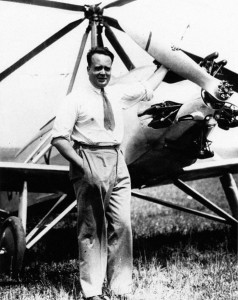
Then, on January 20, 1923, the Cierva C.4 suffered an inflight engine failure during a test flight. Instantly, the aircraft’s nose pitched up sharply — had it been a fixed wing aircraft, the wing would have stalled, probably with fatal results. As everyone held their breath, the Autogiro instead simply fell off into a regular autorotating descent, from which it was landed successfully. De la Cierva’s dream of solving the problem of the stall had come to fruition. Another interesting discovery was that when the Autogiro was turned sharply, the increased loading was automatically addressed not as much with a change in the angle of attack of the overall rotor disk (as a fixed wing would address the need for greater production of lift), but rather through the natural and instantaneous acceleration of the rotor itself. The higher the loading, the faster the rotor would spin — all of it occurring naturally and without any pilot intervention. Thus, De la Cierva found that in normal flight angle of attack was largely superfluous, what mattered was rotor speed.
De la Cierva’s Autogiro had come of age.

Final Issues
In the years that followed, Juan de la Cierva’s Autogiro flew and entered production. By partnering with other aircraft manufacturers for the fuselage and tail designs, he went through a range of aircraft — an Avro 504K fuselage was used in his Cierva C.6 which gained him sufficient backing to proceed with founding his new company, the Cierva Autogiro Company, which was sponsored by the wealthy Scot, James G. Weir.
In the years afterward, he focused on improving the rotor and powerplant design. A key challenge was spinning up the rotor prior to take off. Unless the rotor spun fast enough, the lift from autorotation would be insufficient to achieve take off. Initially, he used a rope wrapped around the hub which would be manually pulled to get the rotor spinning up to half the speed it needed for flight. As the Autogiro accelerated down the runway, the rotor would accelerate until it achieved the desired rate to fly. Later, he developed intercoupler systems whereby engine power would be applied to get the rotor spinning first and then, through a clutch, would be redirected to the propeller to begin the forward motion of the take off roll.
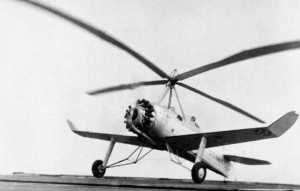
His most famous autogyro design derivative was known as the Pitcairn PCA-2 autogyro. Built in the USA under license, it was flown by numerous famous pilots, including by Amelia Earhart, and was even landed on the White House lawn. The PCA-2 served as the world’s first successful airborne news camera aircraft — flying for the Detroit News in Michigan — and today remains a much sought-after icon of classic 1930s era aircraft design.
As for Juan de la Cierva, sadly, he was killed in a plane crash on December 9, 1936, when a KLM DC-2 in which he was a passenger destined for Amsterdam crashed soon after it departed Croydon Airfield. In low cloud, it drifted off the departure path and collided with a building on rising terrain. He was killed instantly.

Why to Autogyro’s have little stubby wings? Do they actually provide any usable lift? And if they’re only to have some place to attach the wheels, surely a simpler way could be found and the weight of the wings could be saved.
Jim Abbott, Tucson, AZ
Great question! The “stubby wings” sport the ailerons for roll control — it is as simple as that! They do provide some lift as well, but the main source of lift is the rotor.
Thomas.
Do you know if the Pitcairn PCA-2 ever flew in any air meets in Florida in the 1930s? I have photos from my grandfather that were in a group labeled “1931-31 Air Meet” with no indication where that might have been.
The family lived in Central Florida from 1925 on. They were originally from Escanaba, Michigan, and traveled to Chicago and to the Upper Peninsula many summers before World War II so I have clue where the photo may have been taken.
The shot I have that I think might be of the Pitcairn PCA-2 is a terrible shot – from a distance into a bright sky with a tiny little aircraft. But the position of the rotor and the shape of the wings matches the Pitcairn PCA-2 nicely.
Anne
See this video: https://vimeo.com/829931328/05da0d7c60
The Autogyro aircraft seen at 7:39 is almost certainly a Pitcairn Autogyro, made in USA and favored by the Navy. See the last photograph on this page: https://fly.historicwings.com/2013/06/de-la-cierva/
The winglets match. Plus the engine. What kind of engine is it?